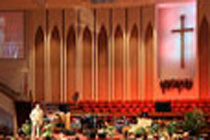Dynamics of Idealism: Volunteers for Civil Rights, 1965-1982

These materials were collected for a study on the attitudes, backgrounds, goals, and experiences of volunteers participating in a 1965 Southern Christian Leadership Conference voter registration effort. Resources include questionnaires submitted prior to and following the project, as well as a follow-up survey conducted in 1982.
Participants were queried about why they volunteered, what they expected, their attitudes regarding race and politics, images they held of the South, expectations they had regarding the African American community, personal memories and effects of their participation, and subsequent attitudes regarding civil rights, violence, and social change. These resources offer insight into the Civil Rights Movement and some sociological aspects of American reformers.
